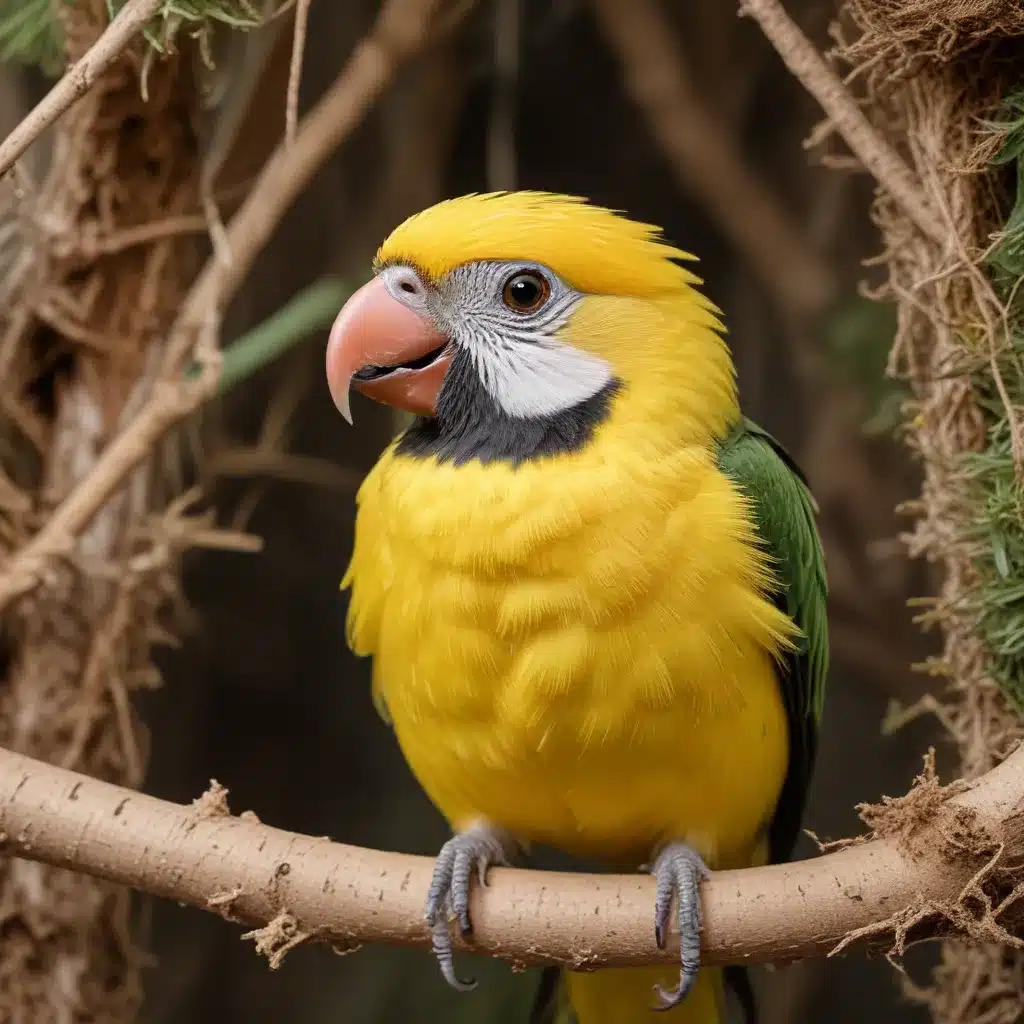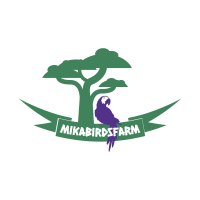
Avian Enrichment Activities: Keeping Your Feathered Friends Engaged and Entertained
As an experienced avian caretaker and expert in bird species, breeding, care, habitat setup, nutrition, health, training, exotic species management, behavior interpretation, adoption practices, enrichment techniques, safety protocols, seasonal care, FAQs, customer testimonials, bird rescue, product assessments, travel advice, debunking myths, and events/news in the avian community, I’m thrilled to share my knowledge on the importance of avian enrichment.
Avian Behavior and Cognition
Importance of Mental Stimulation
Our feathered companions are intelligent, curious creatures that require a stimulating environment to thrive. Just like humans, birds need both physical and mental exercise to maintain their well-being. Providing enrichment activities that cater to their natural behaviors is crucial for preventing boredom, stress, and the development of undesirable habits.
Birds in the wild are constantly engaged, exploring their environments, foraging for food, and interacting with their flockmates. When brought into captivity, it’s our responsibility as caretakers to replicate these enriching experiences as much as possible. By offering a variety of physical, cognitive, and sensory stimuli, we can ensure our avian friends lead happy, healthy, and fulfilling lives.
Assessing Individual Needs
It’s important to remember that each bird species has unique requirements based on their evolutionary adaptations and natural behaviors. A small ground-dwelling finch will have very different enrichment needs compared to a large, powerful parrot.
When designing an enrichment program for your feathered friend, take the time to observe their natural tendencies and preferences. Do they enjoy climbing and swinging, or do they prefer foraging on the ground? Are they drawn to bright colors and shiny objects, or do they respond better to more muted tones and natural textures? Paying close attention to your bird’s individual quirks and needs will allow you to create a tailored enrichment plan that truly resonates with them.
Evolutionary Adaptations
Understanding the evolutionary history and adaptations of different bird species can provide valuable insights into their enrichment requirements. For example, parrots and macaws have evolved powerful beaks and strong, dexterous feet, allowing them to manipulate and destroy a wide range of objects. Providing these birds with sturdy, chewable toys and foraging opportunities that challenge their problem-solving skills is essential.
In contrast, smaller seed-eating birds like canaries and finches have delicate, pointed beaks better suited for delicate, finely textured tasks. Offering them foraging puzzles with smaller openings and lightweight, shredable materials can fulfill their natural behaviors while catering to their physical capabilities.
Enrichment Strategies for Caged Birds
Foraging and Feeding Enrichment
One of the most important aspects of avian enrichment is providing opportunities for foraging and natural feeding behaviors. In the wild, birds spend a significant portion of their day searching for, procuring, and consuming food. Replicating this in a captive setting can be highly rewarding for your feathered friend.
Consider hiding treats or pellets in puzzle feeders, scattering seeds in a foraging tray filled with shredded paper or coconut fiber, or suspending food items from ropes or chains to encourage natural foraging and problem-solving skills. You can also offer a variety of fresh fruits, vegetables, and other nutrient-dense foods to keep mealtime interesting and engaging.
Perching and Nesting Opportunities
Providing a diverse array of perches, platforms, and nesting materials can stimulate your bird’s natural instincts for climbing, exploring, and nest-building. Incorporate a range of textures, sizes, and shapes to encourage physical activity and encourage species-specific behaviors.
For example, you might include sturdy wooden dowels, rope perches, and flexible branches that allow your bird to grip and maneuver in different ways. Offering nesting materials like shredded paper, untreated wood shavings, or soft, natural fibers can also spark their innate desire to create a comfortable, secure environment.
Social Interaction and Training
Birds are highly social creatures, and regular interaction with their human caretakers can be a vital source of enrichment. Spend time each day engaging in positive, reward-based training sessions, teaching your feathered friend simple tricks or commands. Not only does this strengthen the bond between you and your bird, but it also provides mental stimulation and a sense of accomplishment.
Additionally, consider introducing your bird to other avian companions, if appropriate for the species. Carefully monitored social interactions can fulfill their need for companionship and encourage natural behaviors like preening, vocalizing, and play.
Enrichment for Free-Roaming Avians
Outdoor Enclosure Design
For birds that have the opportunity to roam in an outdoor aviary or flight cage, the design of the environment is crucial for providing enrichment. Incorporate a variety of perches, platforms, and hiding spots that allow your feathered friends to explore, climb, and hide as they would in their natural habitats.
Incorporate natural elements like live plants, branches, and rocks to create a more immersive and stimulating experience. Providing access to natural sunlight and fresh air can also have a profound impact on your bird’s overall well-being.
Natural Foraging Habitats
Replicating the foraging opportunities found in the wild is an excellent way to engage your free-roaming birds. Set up designated areas within the aviary where you can scatter seeds, nuts, or other edible items for them to discover and extract. You might even consider planting edible herbs, fruits, or vegetables that your birds can forage on their own.
Encouraging natural foraging behaviors not only provides mental stimulation but also promotes physical activity and a sense of purpose for your avian companions.
Flock Dynamics and Socialization
In the wild, birds thrive within the complex social structures of their flocks. When keeping multiple birds together in an outdoor aviary, pay close attention to their interactions and establish a harmonious flock dynamic.
Provide ample space and resources to prevent competition and aggression, and monitor for any signs of bullying or unnatural behaviors. Fostering positive social interactions can be a powerful form of enrichment, allowing your birds to engage in natural vocalizations, preening, and other flock-based activities.
Toys and Tools for Avian Enrichment
Interactive Puzzle Feeders
Puzzle feeders and foraging toys are an excellent way to challenge your bird’s problem-solving skills and encourage natural foraging behaviors. These interactive devices require your feathered friend to manipulate, move, or dismantle components to access hidden treats or pellets.
Look for puzzle feeders that can be easily filled with your bird’s favorite foods, and consider introducing new, more complex models over time to keep them engaged and stimulated. Some popular options include sliding doors, spinning discs, and multi-chambered puzzles that require your bird to use their beak and feet to solve.
Chewing and Shredding Materials
Birds, especially parrots and macaws, have a natural instinct to chew and shred. Providing them with a variety of safe, appropriate materials to sink their beaks into can be incredibly enriching. Offer a range of wooden blocks, untreated branches, cardboard, and other biodegradable items that allow your feathered friend to exercise their powerful jaws and explore their surroundings.
Rotate these chewing and shredding toys regularly to maintain novelty and prevent boredom. Be sure to monitor their usage and replace any worn or damaged items to ensure your bird’s safety.
Novel Objects and Rotational Enrichment
Introducing new and unfamiliar items to your bird’s environment on a regular basis can spark their curiosity and encourage exploration. This could include items like mirrors, bells, paper bags, or even a small section of a paper-lined cardboard box.
Rotate these novel objects in and out of your bird’s habitat, ensuring that they always have something new and exciting to discover. This approach not only provides mental stimulation but also helps prevent the development of stereotypic behaviors that can arise from a static, unchanging environment.
By implementing a diverse array of enrichment strategies tailored to your bird’s individual needs and evolutionary adaptations, you can create a vibrant, engaging environment that promotes their overall well-being. Whether you’re caring for a caged companion or overseeing a free-roaming aviary, the key to avian enrichment lies in understanding your feathered friend’s unique behaviors and preferences.
Embrace the S.P.I.D.E.R. framework developed by experts at Disney’s Animal Kingdom, focusing on your bird’s social, psychological, intellectual, dietary, environmental, and recreational needs. By catering to these essential aspects of their care, you’ll ensure your feathered friends lead happy, healthy, and thoroughly entertained lives.
Remember, enrichment is not just a one-time activity but an ongoing process of observation, adaptation, and creativity. Continuously explore new ways to stimulate your bird’s senses, challenge their problem-solving skills, and provide opportunities for natural behaviors. Your efforts will be rewarded with vibrant, engaged, and joyful feathered companions that thrive under your care.
So, let’s dive into the world of avian enrichment together and unlock the full potential of our feathered friends. With a little creativity and a deep understanding of their needs, we can create an environment that truly nurtures their minds, bodies, and spirits. The rewards of a well-enriched avian companion are endless, and the journey is sure to be both fulfilling and FUN!


